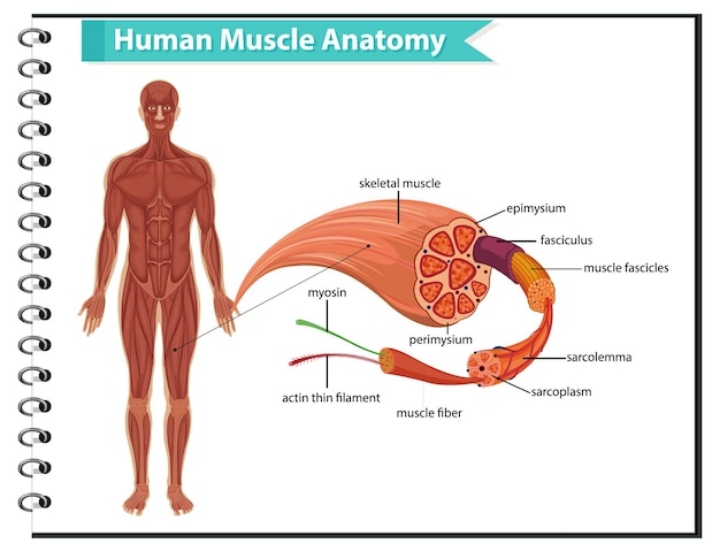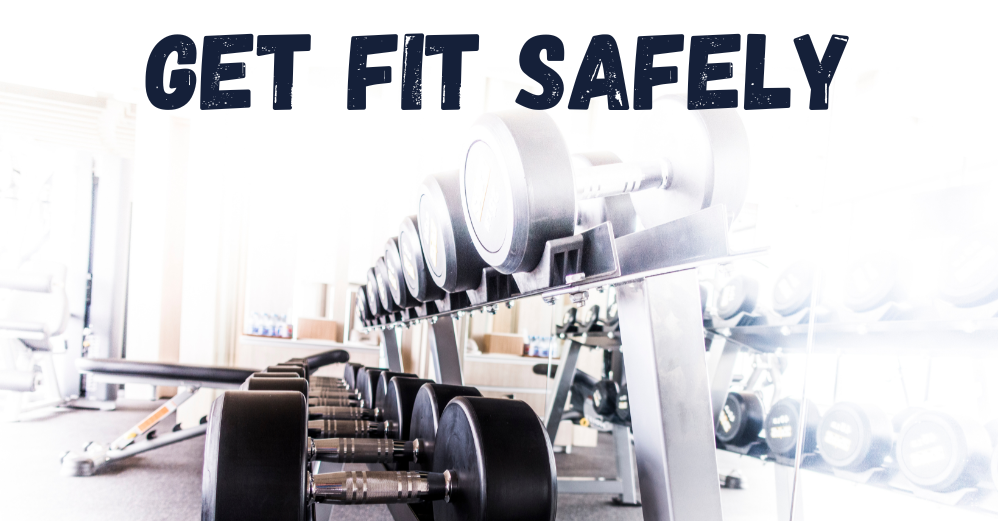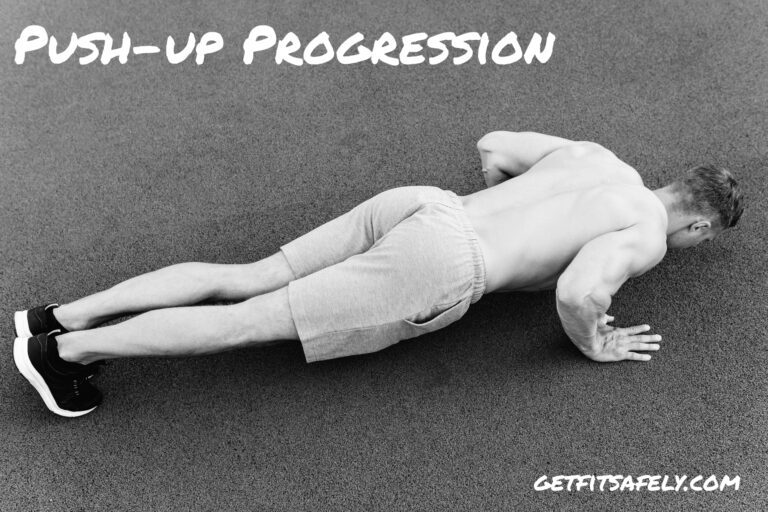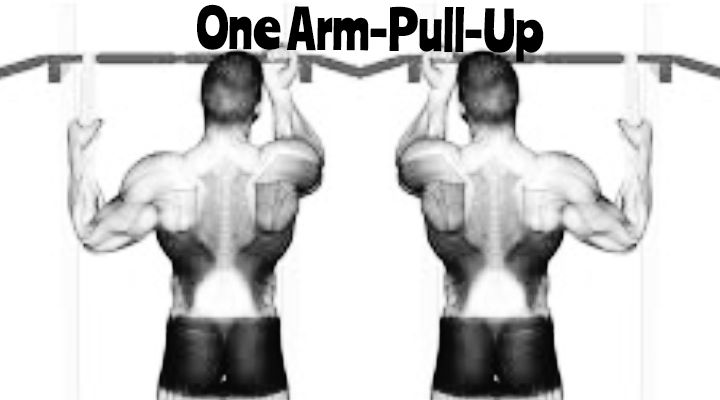Have you ever considered the intricacies of Calisthenics?
It’s a path I’ve taken myself, and I can tell you, it’s infinitely true that not following a specific program can lead to numerous challenges.
Calisthenics, a sport demanding exceptional strength, stability, and muscle coordination, requires more than just enthusiasm to master the exercises correctly.
Starting on the right foot in Calisthenics, respecting each phase of movement execution is crucial.
It’s like a child learning to walk before running.
Each stage, no matter how small, is a vital piece in building your skill and proficiency in the discipline.
The adaptation periods are perhaps the most challenging, as your body, especially tendons and joints, needs time to adjust.
Progressing linearly is key if you want to truly benefit from Calisthenics.
Sometimes, I see beginners, eager to try new skills without respecting their body’s limits, fall victim to injuries.
It’s a reminder that like in any discipline, patience and gradual progress are essential.
| Challenge | Description |
|---|---|
| Lack of progressions | Difficulty advancing to harder variations. |
| Injury Risks for Beginners | High risk due to improper form. |
| Coordination Challenges | Complex movements require high coordination. |
| Less muscle mass | Bodyweight workouts may limit muscle growth. |
| Lack of strength and stability | Beginners lack the strength for certain skills. |
| Personal pre-adjustment factors | Individual limitations can hinder progress. |
| Lacking a Structured Training Plan | Without clear guidance, progress is hard to measure. |
| Inadequate Recovery | Insufficient rest can lead to overtraining. |
| Motivation and Discipline Struggles | Staying committed without a gym can be challenging. |
| Training for Aesthetics | Focus on looks might overlook functional strength. |
1. Lack of progressions

Have you ever felt stuck in your Calisthenics routine, wondering why you’re not making progress?
Let me tell you, it’s a common phase, and I’ve been there too.
In Calisthenics, as in other fitness disciplines, progression is all about gradually increasing resistance.
But here’s the twist: if you haven’t nailed the technique in an exercise, doing more repetitions won’t help.
Instead, you need to focus on mastering that specific move.
This is where many, including myself, face the challenging adaptation period – a phase quite familiar in the fitness world.
During this period, you might feel like Calisthenics isn’t your cup of tea or that your workout plan isn’t effective.
I’ve been there, feeling bored and close to giving up.
However, it’s crucial to see this phase not as a setback but as a stepping stone.
It’s about stabilizing techniques and bodily adaptations essential for long-term success.
To make this phase more engaging, try mixing up your routine.
For example, I incorporated dumbbell and barbell exercises into my Calisthenics routine.
It’s also helpful to shift focus from increasing load to changing sets and repetitions.
This approach not only adds variety but also helps in understanding and pushing your limits.
Enduring and overcoming the adaptation period in Calisthenics can immensely boost your emotional strength.
It’s an opportunity to understand your limits and creatively find ways to surpass them.
Trust me, the sense of achievement is worth every bit of the effort.
2. Injury Risks for Beginners
Just like in any activity, it’s important to be aware of the risk of injuries, especially when you’re starting.
Having learned this the hard way, I’m here to help you navigate through and sidestep the usual pitfalls.
In Calisthenics, concentration and adherence to your limits are key.
In my early days, I identified four common causes of injury:
- Poor Mobility: Initially, I underestimated the importance of mobility, which is foundational for safe training.
- Lack of Adequate Warm-Up: Skipping warm-ups seemed like a time-saver, but it only increased injury risks.
- Impatience in Progression: Rushing to increase the intensity or complexity of exercises, or skipping foundational movements, can indeed lead to strain and injury.
- Not Consulting a Calisthenics Expert: Initially, I tried to go it alone, but professional guidance is invaluable.
Thankfully, these risks can be mitigated by setting up a well-structured training program with an instructor.
Remember, the core aim of Calisthenics is to continuously improve athletic performance.
This requires a deep understanding of your body’s strengths and weaknesses.
When I started, I was eager to push through, but then over time, I learned to listen to my body and stop at any signs of pain.
A common issue in Calisthenics is tendonitis, often caused by joints bearing loads in non-neutral positions.
This happens more frequently when progressions are rushed or performed without a clear progression system that respects joint adaptation over time.
For instance, a handstand puts significant weight on the wrists.
Without proper balance and coordination, the risk of tendonitis increases.
To prevent such injuries, it’s crucial to take precautions and understand the demands of each exercise.
For example, knowing the strain a handstand can put on your wrists can guide you to prepare and strengthen these areas accordingly.
3. Coordination Challenges in Bodyweight Exercises
Coordination is the ability to execute body movements with maximum efficiency and optimized energy use.
This was a hurdle I encountered too, in my early days of Calisthenics training.
Coordination in Calisthenics isn’t just about moving; it’s about doing so with precision.
It involves stability and balance, three interconnected elements that ensure efficient movement.
Stability here is about controlling your body parts effectively, not just holding a position.
Balance? It’s like a tightrope walker’s skill – maintaining your center of gravity firmly over your base of support.
The more complex the discipline or movements, like in Calisthenics, the greater the need for varied and specific coordinative stimuli in training.
This directly impacts the technique and quality of performance.
For me, understanding and improving my coordination was a game-changer.
Calisthenics demands a higher skill level compared to traditional gym exercises.
This requirement for advanced coordination might not make it suitable for everyone, especially in the early stages.
However, with perseverance and proper training, improving coordination can lead to significant gains in performance and technique.
4. Less muscle mass from bodyweight workouts
In a previous article, I discussed the muscle-building potential of Calisthenics compared to bodybuilding.
While Calisthenics can certainly aid in muscle development, it differs significantly from traditional bodybuilding.
Here are two key reasons:
- Non-Isolation of Muscles: Unlike bodybuilding, Calisthenics doesn’t focus on isolating muscles during workouts. This holistic approach engages multiple muscle groups simultaneously, offering a different kind of strength and muscle development.
- Variable Load Control: In Calisthenics, controlling the load is less precise compared to weightlifting. This variability can influence the extent and nature of muscle growth.
5. Lack of strength and stability
Another common challenge in Calisthenics, especially for beginners, is the lack of strength and stability.
Often, new practitioners don’t have the strength required for specific skills.
This was a hurdle I faced when I started.
Inadequate strength can lead to compensatory movements that overload certain body parts.
The strength of stabilizer muscles is critical.
Without sufficient strength in these muscles, controlling your body weight and maintaining joint stability becomes difficult.
Achieving optimal body conditioning is essential to create a workout that addresses your strength and conditioning needs.
Patience is key in this journey.
One of the most common mistakes is rushing the process, leading to inadequate recovery and increased intensity loads.
It’s crucial to pace yourself, allowing your body to adapt and grow stronger gradually.
6. Personal pre-adjustment factors

One aspect to consider in physical training, including Calisthenics, is the anatomical changes and challenges associated with aging.
Aging is a process marked by anatomic and structural changes in various tissues, altering the morphology, structure, and functionality of organs and systems.
For older individuals, especially those with heart conditions or certain infections, it’s advisable to opt for gentler activities like Pilates or water aerobics instead of more vigorous exercises like Calisthenics.
Regardless of age, it’s always best to consult a doctor before starting any new exercise regimen.
Take, for instance, a herniated disc.
Those with this condition looking to start Calisthenics might need to consider lighter activities to avoid exacerbating their condition.
7. Lacking a Structured Training Plan
Let me share a slice of my own story.
Picture this: you’re all geared up, and motivated, but without a roadmap, where do you go?
Here’s the thing – in Calisthenics, or any sport for that matter, a tailored training schedule isn’t just helpful, it’s your north star.
I learned this the hard way. In my early days, I was like a ship without a compass, full of energy but drifting aimlessly.
Until I realized, that knowing where you stand and where you want to go, based on your unique psycho-physical profile, is what sets you up for the win.
A haphazard approach? It’s like trying to hit a target blindfolded.
That’s where a seasoned Calisthenics coach comes into play.
They’re like the wise old sage in your fitness epic, breaking down your training into bite-sized chapters, each with its climax and victory.
Your transformation saga will have three riveting acts:
- The Anatomical Adaptation: Think of it as the part where your muscles, tendons, and joints gear up for the upcoming challenges, enhancing your stability and mobility.
- The Psychological Turn: It’s all about keeping your head in the game. Staying motivated, yet grounded, not overestimating your might.
- The Hypertrophy Heroics: This is where you bulk up, not just in muscle, but in strength and resilience, readying for the battles ahead.
Skipping any of these acts?
It’s like missing a crucial plot twist. Without these, you’re a warrior unprepared, leaving your tendons and joints vulnerable to the enemy – injury.
Remember, in the world of Calisthenics, muscle mass isn’t the protagonist; it’s all about neuromuscular harmony and performance.
Once you’ve bulked up the right way, it’s time to shift the spotlight to strength – your ability to conquer and resist, like a hero facing their ultimate challenge.
Your coach, akin to a master strategist, should tailor your training, sculpting you into a paragon of strength, matching, and maybe even surpassing your star stamina.
8. Inadequate Recovery
At least once, you’ve probably encountered a point where you felt like you were pushing yourself too hard.
Trust me, I’ve been there.
It’s like hitting a wall. You might be tempted to keep going, thinking more is better, but that’s not always the case.
Incorporating adequate rest periods into your training routine is essential.
Sometimes, less is more when it comes to recovery.
It’s about finding the right balance.
Maybe you’re thinking, “I can push through it,” but it’s essential to listen to your body.
Rest is part of the journey, not a roadblock.
Let’s not underestimate the power of proper recovery.
It’s not just about preventing injuries; it’s about optimizing your progress.
So, the next time you’re tempted to skip that rest day or push yourself beyond your limits, remember this:
Recovery is your body’s way of preparing you for your next incredible Calisthenics achievement.
9. Motivation and Discipline Struggles
Motivation tends to ebb and flow, much like the progress in Calisthenics itself.
There will be exhilarating highs when you conquer new skills, but there will also be frustrating plateaus and setbacks that can test your resolve.
It’s crucial to understand that motivation isn’t a constant; it’s a variable that can be influenced by various factors.
Begin by setting clear and meaningful goals.
What do you want to achieve with your Calisthenics practice?
These goals act as beacons, guiding your efforts.
However, it’s essential to set realistic expectations.
Sometimes, progress may be slower than anticipated, but that doesn’t diminish the significance of your accomplishments along the way.
Repetitive routines can lead to boredom and a decline in motivation.
To keep your workouts engaging and your enthusiasm high, diversify your training regimen.
Calisthenics offers a vast array of exercises and skills to explore.
Experiment with new movements, challenge yourself with different workouts and embrace the excitement of trying something new.
And lastly, consider joining a Calisthenics community or partnering with a workout buddy.
The camaraderie and shared experiences can provide the motivation and accountability you need.
Interacting with fellow enthusiasts can rekindle your passion and drive.
You’ll find support, encouragement, and valuable insights to enhance your training.
10. Training for Aesthetics: Beyond Surface Looks, the Underlying Challenges
So, you want to train in Calisthenics because it looks cool, right?
Let me give you the real scoop. Calisthenics, with its blend of skills and athleticism, isn’t just about looking good; it’s a journey of patience and persistence.
Think of Calisthenics as a craft you’ve got to hone, practicing moves over and over before they click.
It’s not like bodybuilding, where picking up the correct form for exercises is more straightforward.
The movements in Calisthenics?
They’re like learning a complex dance routine from scratch.
You’ll stumble, maybe even fall, but that’s part of the script.
Imagine orchestrating multiple muscle groups in a single, fluid motion.
That’s Calisthenics for you. It’s not something you master overnight; it’s an art that unfolds over time.
Compare this to bodybuilding, where a personal trainer shows you a move and, boom, you’re on it.
Progress in weightlifting is like a steady walk in the park while adapting to Calisthenics.
More like scaling a mountain. With bodyweight training, it’s just you and gravity – no piling on 100 kg for push-ups.
Sure, you can’t make yourself lighter when you start weaker, but as you grow stronger, adding weights like ankle and wristbands is an option, though not as straightforward as in bodybuilding.
Here’s my advice for Calisthenics newbies: don’t rush for that flashy move. It’s a marathon, not a sprint.
Set your sights on where you want to be in 6 months, a year.
Train smart, stay committed, and before you know it, your body will be not just stronger, but also more harmoniously developed than ever.
Typical Calisthenics Joint Injuries:
Let’s talk about a couple of common joint injuries you might bump into in the world of Calisthenics.
Trust me, knowing about these can be a real game-changer in how you train.
1. Shoulder Impingement Syndrome
This one’s a frequent visitor for many Calisthenics enthusiasts.
It’s like your shoulder is saying, “Hey, that’s too much!” You end up with inflammatory fluid and a thickened tendon.
Sometimes it’s not just the workload but also shoulder instability – think weak rotator cuffs or loose ligaments.
The usual suspects?
Exercises where you’re reaching above your shoulders.
We’re talking handstands, pull-ups, dips, and especially those weighted dips.
They can crank up the pressure on your shoulders.
2. Long Head Biceps Issues
Your brachial biceps muscle has got these two buddies starting at the shoulder blade – the long head and the short head tendons.
Trouble with the long head is kinda like a sidekick to rotator cuff disorders.
Among athletes, it’s a pretty common scene, showing up in about 55-60% of shoulder instability cases (think subluxation and dislocation).
In Calisthenics, when you’ve got shoulder woes like impingement syndrome, unstable joints, or a weak rotator cuff, that long head tendon takes a beating.
Feel that stiffness in your subscapularis muscle?
That’s your cue to slow down and check if you’re putting too much strain on that tendon.
Watch out, particularly during moves like the supine grip plank, heftiest, and the back lever.
3. Epicondylitis and Epitrocleitis (Elbow Trouble)
![]()
These two are like the notorious twins of elbow pain, showing up on the lateral and medial sides of the elbow.
They’re not your typical inflammations, though. It’s more about the tendons getting worn out over time.
Which moves put you in the danger zone?
Look out during the front and back lever; supine, prone, and weighted pull-ups; dips, and weighted dips.
They’re the usual culprits behind these elbow woes.
4. De Quervain’s Tenosynovitis (Wrist Pain)
This one’s all about inflammation right at the base of your thumb.
It messes with the sheaths lining the tendons of two key muscles: the abductor pollicis longus and extensor pollicis brevis.
These guys are crucial for thumb movement.
In Calisthenics, certain moves can put your wrists through the wringer.
We’re talking about exercises where you’re pushing down with outstretched arms, sending your body weight right onto those wrist tendons.
Keep doing this, especially in the wrong form, and you’re looking at microtrauma.
The tendon sheath gets inflamed and thickened, squeezing the space for the tendon and bringing on the pain.
What should you watch out for?
Exercises like push-ups, planks, handstands, and isometric handstands are the main players here.
Typical Calisthenics Muscle Injuries:
As with any physical activity, it’s crucial to know about the typical muscle injuries you might encounter.
Equipped with this insight, you’re not just preparing; you’re fortifying yourself against these setbacks and learning how to overcome them.
1. Muscle Tears
Imagine pushing your muscles beyond their limits when they’re not quite ready – that’s when muscle tears show up.
These are the big guns of muscle injuries.
The muscle fibers fray and can even tear completely, leading to some serious, wince-worthy pain.
2. Muscle Contractures
Ever had your muscles clamp up on you, refusing to budge?
That’s a muscle contracture for you.
It’s like your body’s alarm system when you go overboard with the effort.
The muscle swells up but usually chills out and relaxes after you give the affected area some rest.
3. Muscle Strain
Muscle strains are like ambushes – they’re sudden and catch you off guard.
Imagine executing a movement and out of nowhere, your muscle fibers overextend. Bam!
You’re hit with a sharp pain, and your body instinctively reacts with a myotatic stretch reflex.
This reflex causes the strained muscle itself to contract, helping to protect it from further injury.
In Calisthenics, muscle strains can often occur unexpectedly, particularly during intense stretching exercises.
The golden rule?
Always warm up specifically and thoroughly.
And the moment you feel pain, that’s your signal to stop and reassess.
Conclusion
Patience is the cornerstone of success.
Here’s why: In Calisthenics, your body’s adaptation to the grind is more of a marathon than a sprint, especially for those all-important tendons.
Tendons are the silent workhorses of your body’s movement – they gradually adapt to the demands of intense workouts.
Meanwhile, your muscles might be all pumped and ready, gaining strength faster than the tendons can keep up.
It’s a bit of a mismatch.
This slower pace of tendon adaptation compared to muscle development is precisely why beginners, eager to push their limits, often end up with tendon inflammation.
It’s like they’re running before they can walk.
The secret sauce?
Get yourself a personal trainer.
Having an expert in your corner isn’t just about avoiding missteps; it’s about smoothly sailing through those adaptation periods and slashing the risk of injuries.





